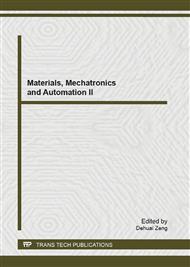p.211
p.217
p.223
p.226
p.232
p.238
p.242
p.249
p.254
Catalytic Cracking Light Cycle Oil Solidifying Point Soft Sensor Based on SVM
Abstract:
Genetic Algorithms and Support Vector Machines are introduced first in this paper. A mathematic model for predicting the solidifying point of light cycle oil of catalytic cracking unit is developed on the basis of the practical data. Results of on-line calculation show that the deviation between the predicted value and is fit to width.This model by way of the soft meter is used to optimize real time unit operation.
Info:
Periodical:
Pages:
232-237
Citation:
Online since:
August 2013
Authors:
Price:
Сopyright:
© 2013 Trans Tech Publications Ltd. All Rights Reserved
Share:
Citation:


